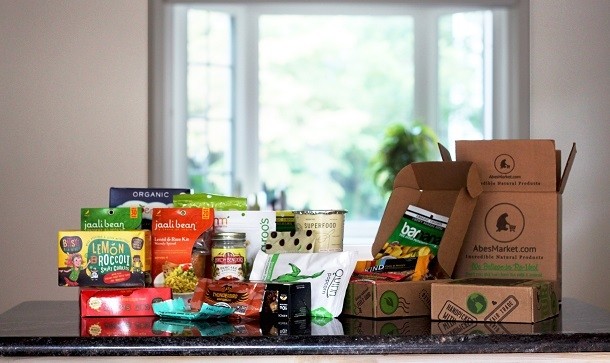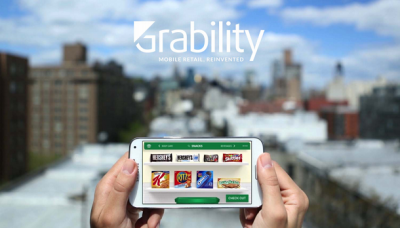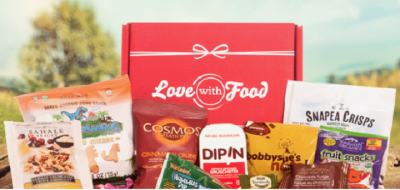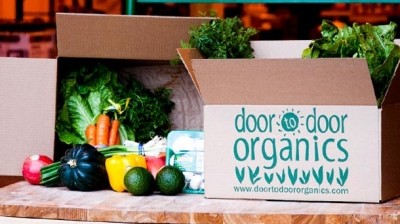Abe’s Market: natural for the masses

The Chicago-based company says it isn’t trying to replace mainstream online retailers or brick-and-mortar natural food stores; rather each serves a unique purpose in a rapidly evolving marketplace.
“We don’t advocate for consumers shopping online only,” Abe’s chief revenue officer Kimberley Grayson tells FoodNavigator-USA. “We find that we do coexist with sites like Amazon along with offline retailers like Whole Foods. We don’t sell fresh product and think people should go and pick out their milk and produce in store. And we believe Amazon is a very efficient way to shop when consumers know what they’re looking for.”
‘We don’t pigeonhole brands’
The void Abe’s cofounders Richard Demb and John Polin were looking to fill when they launched late in 2009 was for a marketplace where consumers could buy curated natural products in aggregation. As Grayson notes, online retailers like Amazon work better for consumers looking for a specific product; they don’t provide a “discovery engine” for learning about new brands or ingredients. Offline, the closest proximity to Abe’s is Whole Foods, though it has its limitations, too, she adds.
“Whole Foods isn’t in every market in the country. And it doesn’t cover every brand; who can really?” she says. “Abe’s Market recognizes the amazing advances and innovations in small product companies coming into this space who otherwise wouldn’t have had a voice. We give consumers a place to find these products and we give brands a voice.”
The site is set up to enable customers to search by category (breakfast, lunch & dinner, healthy snacks, low-sugar food, vegan food, superfoods), and enter combinations of qualities (gluten-free, organic, dye-free, casein-free), price parameters and brands to find products that meet their specific sets of needs.
“In stores, that store has to predetermine where to set a product, assuming there’s one main way you will shop for an item. So should a snack that’s Paleo go in the Paleo aisle? We create unique pathways that don’t pigeonhole a brand. The consumer can find you thought many preferences.”
Products are picked up from the warehouse and ready to ship within 24 hours of the consumer placing an order. And in order to ensure it has the latest and greatest products in stock, new product rollouts operate within a similarly quick turnaround. It takes just 30 days for a product to go live on Abe’s Market’s site from the time it’s discovered.
Brands range from those undergoing their first production run up to bigger household names like Kind. In order to even be considered, brands’ ingredient decks must satisfy certain criteria: no high-fructose corn syrup, phthalates or GMOs, and organic when possible.
Taste and efficacy are also key components, particularly if a consumer is looking to (realistically) replace his or her favorite chips with a better-for-you alternative.
Finally, brands must have retail-ready packaging. “As an online retailer, it’s critical that the product jumps off the page,” she says, noting that Abe’s has to evaluate what differentiates each product, taking into account ease of navigation and lifestyle-driven need for options.
“Too much choice is a problem out there. How many granola brands is enough to put you into paralysis?”
Trial is key
Abe’s customers range from natural product devotees who don’t buy outside the channel to so-called dabblers—those seeking alternatives to conventional products who are overwhelmed by choice along with the foreign-sounding ingredients (what is sea buckthorn?) and associated activities (how do I detox?) of the lifestyle.
The key to making repeat buyers out of the whole spectrum of customers, Grayson says, is trial. Last spring, Abe’s rolled out “Try for $2”, a sampling program that offers a curated assortment of three different products every day for $2 apiece with shipping included. In return, they leave feedback on the products they sample.
“It’s been revolutionary,” Grayson says. “We see customers who go through trial come back to purchase that product and come back to try more. They’re constantly engaged in the ecosystem and converting.”
Emphasizing value early in the relationship gives consumers incentive to try a product initially. Once they’ve engaged with the brand, they’re more likely to buy again, Grayson says. “A product’s value only as good as favorability for it.”
An increasingly two-way dialogue
For startup brands, Abe’s model gets them exposure in markets they might not have reached as quickly through in-store trial and gives them immediate access to meaningful feedback. And consumers get their voices heard.
“Standing in local stores and handing out samples is great, but it’s a lengthy process to get feedback. Maybe brands sees sales go up that day at the register, but they didn’t gain insights that are trackable,” she says. “Online enables us to track and share that information with brands. Consumers love it; they get to try new products and give their voice back to brand, which is an adjunct of our social society and consumers wanting a voice.”
Indeed, often the impetus for a new product, brand or category expansion will come from Abe’s social audience searching for more options featuring a certain ingredient or a way to solve a problem in their lives.
And as consumers’ collective voice gets louder through the increasingly social and interconnected world of e-commerce, its players must evolve accordingly, Grayson says.
“We already enable customers to shop any hour of day and have products shipped to them, but I don’t think ease and utility alone is the wave of future. Now the shopping experience needs to be differentiated and provide value to consumers on their lifestyle journeys,” she says.
“For us, that means constantly asking ourselves, how do we double down on our efforts? How do we keep bringing more brands to market? How do we bring more consumers to the natural space? How do we expand our offering with more new products? That’s what we think about every day.”












